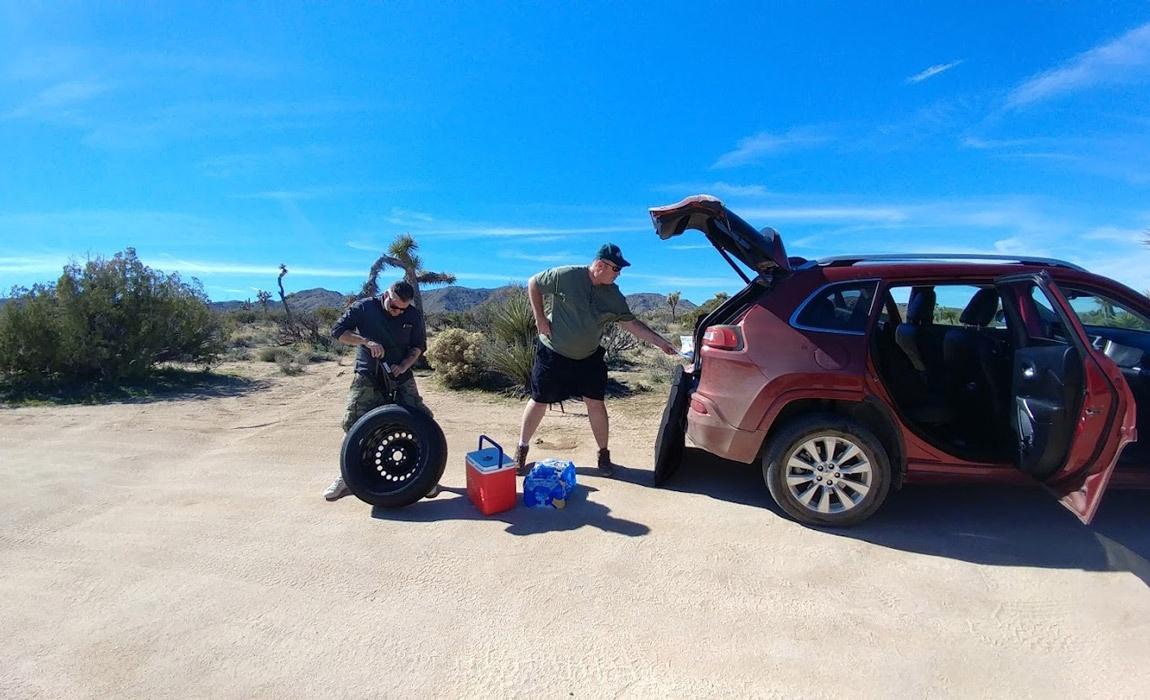Tires are a critical part of your car. Without them, you can't go anywhere. So don't panic if you find yourself with a flat tire and no spare! You may be able to fix it without spending a lot of money or waiting for someone else to do it for you. Here are five easy tips that will help get your tire back on the road as quickly as possible:
Always Check The Ground Before Changing A Tire
Most of the time you're going to be on pavement or a hard packed shoulder but if you are driving on a dirt road or have soft shoulders then jacking the car so you can change the tire can be dangerous. If you have doubts about how much weight the surface can hold - don't start the job. Instead, move the vehicle to a better area or create a base to spread out the weight.
Check The Valve Stem
Ensure that your valve stem is not leaking air by using soapy water or an air pressure gauge. If it is, you can replace the valve stem yourself.
If your tire has a leak in another spot than at the valve stem, it may be time to take off your wheel and patch or replace the inner tube. You can usually buy an inner tube yourself at a low price; they are relatively cheap and easy to install with an air compressor.
If the lug nuts now hold your wheel on, you can put a tire boot into place to hold it together until you get home or to another car service shop for help. They are available at most auto parts stores and are reasonably priced.
Check The Rim For Damage
Check if there is any damage around the rim where the tire meets the wheel. Rim damage can often be repaired without buying a whole new wheel. All you need is a spoke or nipple wrench, some epoxy, and the proper instructions.
If there is no rim damage, but the tire pressure is still low after checking the valve stem, then you may have a bigger problem on your hands that will require a trip to the mechanic. Continuing to drive on a low-pressure tire can damage the rim and create an even bigger problem down the road. Rim Repair can be done by a professional, or you can try to do it yourself with a few simple tools and some helpful instructions.
If you're not comfortable doing any of these repairs yourself, don't be afraid to take your car into a shop for some professional help. A flat tire is a hassle, but it's better to spend a little money now for repairs instead of wasting even more by neglecting the tire.
Consider Fixing A Damaged Tire With A Plug
If you have a tire that has been punctured, the best option is to replace it. However, if replacing your car's tires isn't in your budget at this time, there are other options available for plugging a damaged tire. A steel plug with rubber cement works well on most flat spots and can be found at most gas stations. If the tire is severely damaged, you will need to patch it with a rubber plug kit. These kits can be found at most auto parts stores and include all necessary tools and materials for repairing your tire.
When using a plug kit, make sure that you remove any debris from the tire hole and clean the area surrounding it. You will then need to insert the plug and sealant into the tire. Next, you will need to inflate your car's tire as usual. The plug can be a temporary fix, but you will need to have your tire replaced as soon as possible.
If You Don't Have a Full Sized Spare Buy A Used Tire
To save money, many manufacturers no longer include a full-sized spare in case of emergency and all too often folks forget to replace the space entirely. Don't get stuck without options. If you can't afford a new tire, buying second-hand tires is an easy to get around your problem. Used tires are often in good condition and can be purchased for low prices at local junkyards or online sites; make sure that they fit your car before making any purchases.
Just be sure to check the tire's tread depth and overall condition before you buy it, as well as the age of the tire. Also, make sure that you know how to change a flat tire before purchasing a used one! It's always better to be safe than sorry.
Ensure That The Nuts Are Tightened Properly
To ensure that your tire is repaired correctly, tighten the bolts after getting everything put back together. If a bolt becomes loose while driving down the road, it can cause damage to other parts of your vehicle and make for unsafe travel conditions. So make sure all nuts are tightened before going on with your day-to-day activities.
In conclusion; Fixing the tires of your car will ensure that you are safe on the road, no matter what terrain conditions may be present. While changing tires has been made easier by high-tech advancements in the industry, it is still necessary for any driver. If you are unsure how to fix a flat tire, there are plenty of resources available online and through your local community. Take some time to learn about the process before you find yourself stranded on the side of the road.

